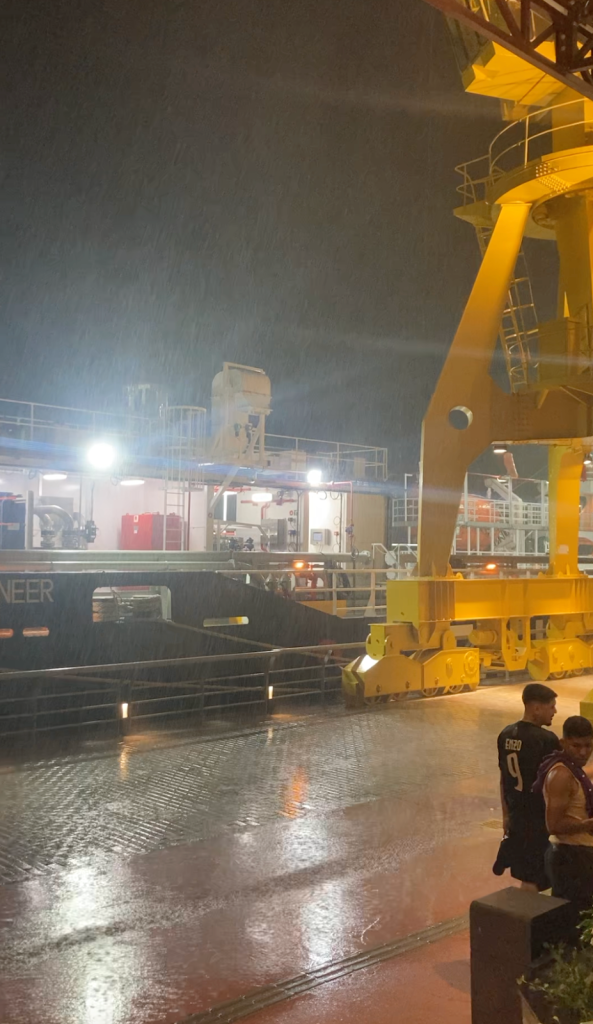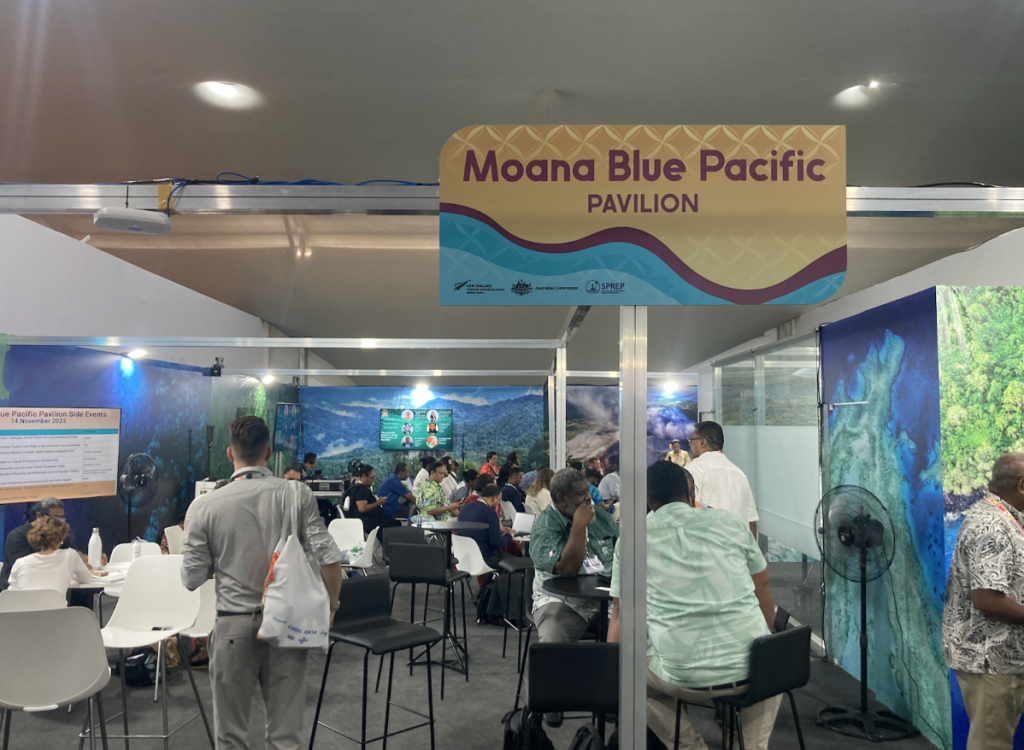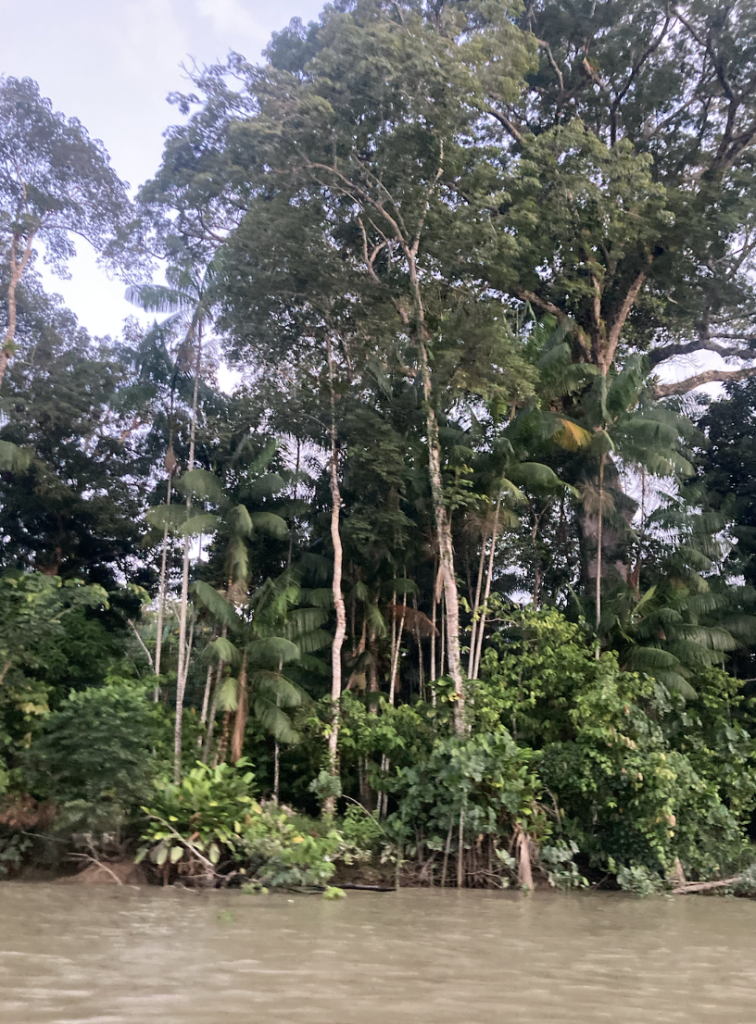COP30 Day 6: Water at the Center of Climate Action
Keiran Lorentzen, Maine Law
The views expressed herein belong exclusively to the delegate attending COP30 to observe and study international climate governance; they do not necessarily reflect those of the University or the Climate Change Institute.
Today, November 15, 2025, COP30 is continuing in Belém. While this is the last day that the University of Maine will be represented in Brazil, the work continues for delegates over the next week. I’d like to particularly thank the delegations from the University of New England and the University of Connecticut, without whom our delegation would not have been able to attend all at the same time. Each of my fellow delegates from the University of Maine have shared observations, updates, and insights from the first week of the 30th Conference of the Parties to the United Nations Framework Convention on Climate Change (COP30). I am writing this blog during a layover in the Viracopos International Airport in São Paulo, having left Belém a few hours ago.
The Significance of Water
Arriving in Belém, the capital of Pará, Brazil, the first thing that struck me was the heat, followed quickly by the humidity. Temperatures in Belém are on average between 75-85oF (23-31oC) year-round, with humidity usually resting at 80%. The tropical rainforest regularly produces torrential, sudden-onset downpours in the afternoons. Each day this week, these rainstorms have caused panels and events to pause as the raindrops hitting the roof of the temporary facilities transformed the event space into the inside of a snare drum.
The rain prompted me to consider my purpose in coming to COP–studying international efforts to address the effects of climate change on marine resources and small island developing states (SIDS). Not only did the rain literally force a moment of reflection (you often could not hear the person speaking next to you) but it was a reminder of the Amazon rainforest’s unique water cycle. As I learned in a panel presented by the Netherlands and the International Water Management Institute (IWMI), A Global Call for Hydrological Resilience: Putting Water at the Heart of Climate Action, the Amazon rainforest generates its own rain. Each day, the rainforest seeds rain clouds due to the large amount of water that is evapotranspired from vegetation and soil, leading to the unique rainstorms.
One of the key points of the panel was that climate-related disasters often have water at their core. Climate change disrupts water cycles, which can have disastrous effects. Whether it is due to a lack of water (fires, droughts) or too much water (flooding, severe storms) natural water cycles are being disrupted by humanity. The water cycle in the Amazon is critical for surrounding communities due it impacting access to fresh water. Deforestation threatens to completely disrupt this cycle. So, listening to (or getting caught in) the daily downpour in Belém became a symbol of what the fight against climate change is for, and why we had to be here, in the heart of the Amazon.
Perhaps the most well-known example of human disruption on a hydrological cycle is sea level rise. As global surface temperatures rise, thermal expansion of water occurs, and ice caps and glaciers begin melting, putting more water into the ocean, raising sea levels.
Mitigation, Adaptation, and Loss and Damage
Much of the discussion at COP30 (and the climate space in general) centers on three crucial components of climate work: (1) mitigation–efforts to reduce the amount of greenhouse gases (GHGs) in the atmosphere world-wide by preventing emissions of GHGs and removing GHGs from the atmosphere; (2) adaptation–adjusting to the effects of climate change by taking actions to minimize the harmful effects; and (3) loss and damage–accounting for the negative effects of climate change that occur regardless of mitigation or adaptation efforts.
If we think of climate change as a car that humanity is driving towards a brick wall, mitigation is trying to step on the brakes, adaptation is wearing a seatbelt, and loss and damage is the money needed to repair the car after the collision.
At first blush, this framework would intuitively reach towards climate justice. However, as the COP30 begins to move from developing a framework into implementation, this system is being stress tested. First of all, not all states have equal incentive to mitigate. Developed states have more resources to spend on adaptation, and have historically emitted more GHGs and have incentives to continue doing so. Furthermore, some states have little to no options for adaptation. Small island states that have little elevation over sea level do not have the option of adapting to dramatic sea level rise. Dynamics like these are what often stands in the way of meaningful climate action.
Small Island Developing States at COP30
In the fight against emissions of greenhouse gases (GHGs), frontlines have emerged. Communities that stand to be hit the hardest by climate change tend to be developing nations, and especially island states that are particularly vulnerable to sea-level rise. The Alliance of Small Island States (AOSIS) is vocal in climate negotiations. For AOSIS, climate change is an immediate existential risk that other developed nations are slow to recognize.
Nationally Determined Contributions (NDCs), as discussed by my colleagues in prior blog posts, are plans developed by states to reduce GHG emissions designed under the Paris Agreement. At COP30, several AOSIS states presented their third iteration of NDCs, the first round of NDCs since we learned that 1.5 degrees of warming is now inevitable.
Among these states, Samoa presented its NDC 3.0 at the Moana Blue Pacific Pavilion. The main theme of Samoa’s NDC was straightforward: ambition. The plan includes goals to expand mangrove habitats, replant coral, and incorporate loss and damage. By leading the way in the realm of NDCs, Samoa along with other SIDS are demonstrating that concrete action on climate is not only possible, but a requirement for avoiding catastrophe.
Photos w/ alt-text:
This is the part of a series of daily blog posts from the University of Maine delegation to COP30.




